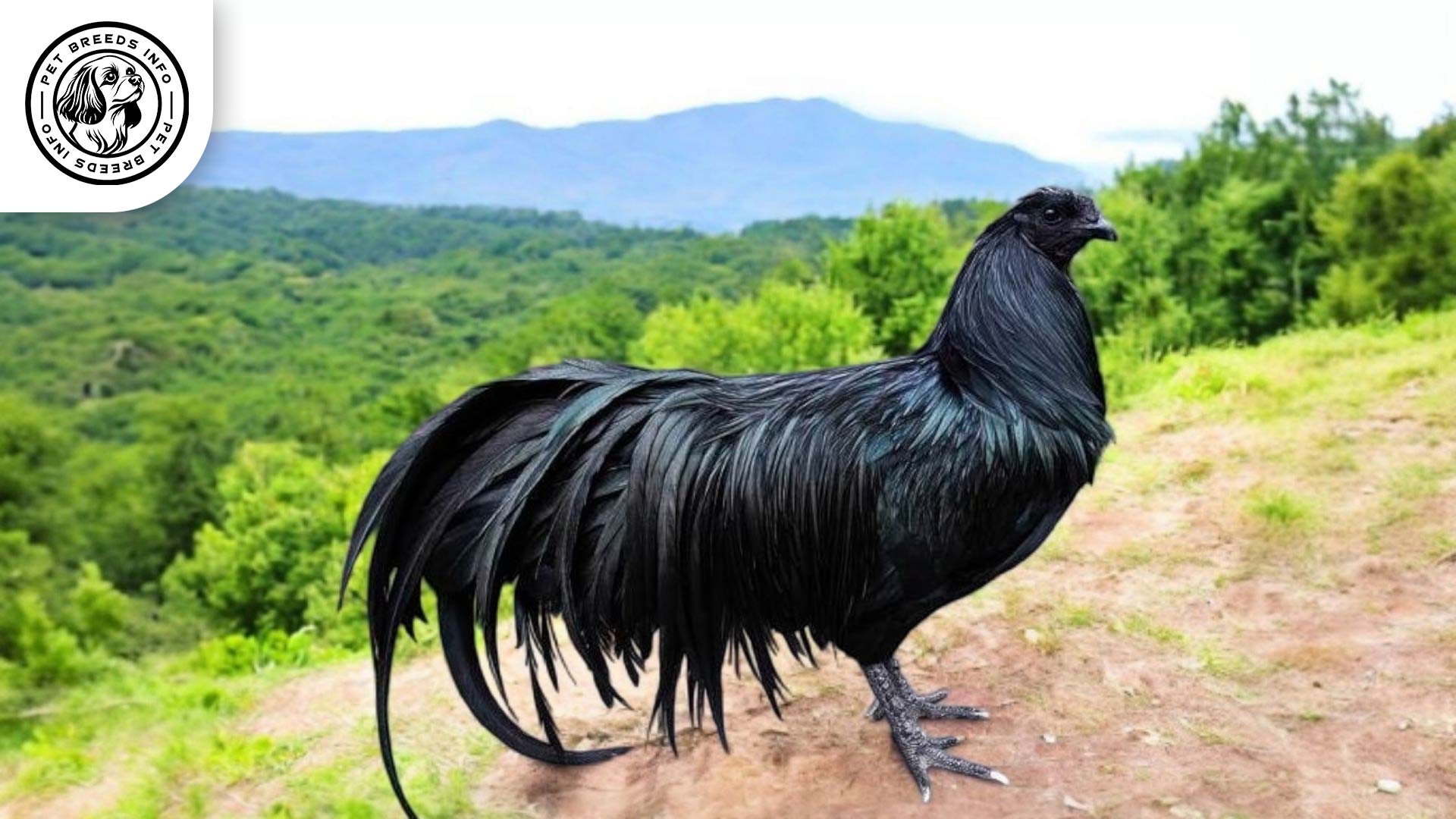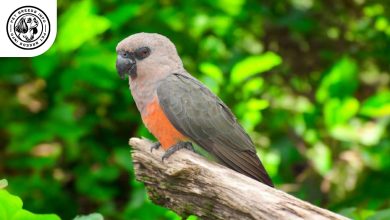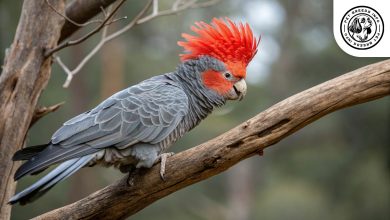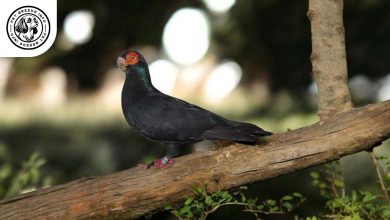Sumatra Chicken Breed: Personality, Lifespan, Food & Care
General Introduction of the Breed
The Sumatra Chicken, known as “Ayam Sumatra” in its native region, originates from the Indonesian island of Sumatra. It is also sometimes referred to as the “Sumatran Fowl.” This unique and exotic breed was originally found in the wild and later domesticated for its striking appearance and fighting abilities.
Historically, the Sumatra Chicken was used in cockfighting, but over time, it became more popular as an ornamental breed due to its beautiful, long, flowing feathers and elegant stature. Today, it is highly valued by poultry enthusiasts for exhibitions and breeding purposes.
Table of Contents
| Common Name | Sumatra Chicken |
| Scientific Name | Gallus gallus domesticus (Sumatra variety) |
| Origin | Sumatra, Indonesia |
| Size | Medium; Roosters: 4–5 lbs (1.8–2.3 kg), Hens: 3.5 lbs (1.6 kg) |
| Lifespan | 5–10 years |
| Colors | Glossy greenish-black plumage with long flowing tail feathers |
| Talking Ability | Low – does not mimic or talk |
| Noise Level | Moderate – alert but not overly noisy |
| Social Behavior | Independent, cautious, not affectionate; roosters may be territorial |
Physical Characteristics
The Sumatra Chicken is a medium-sized breed with a sleek and graceful build. Males typically weigh between 4 and 5 pounds (1.8 to 2.3 kg), while females weigh about 3.5 pounds (1.6 kg).
Its most distinctive feature is its long, flowing tail, which gives it an elegant and regal appearance. The plumage is glossy with a rich greenish-black sheen, making it stand out among other poultry breeds.
The Sumatra Chicken has dark-colored eyes, typically black or deep brown, complementing its exotic look. The small comb and wattles are also black or dark purple, a unique trait not often seen in other chicken breeds.
The breed’s legs and feet are a dark slate or black color, often ending with multiple spurs, giving the rooster a fearsome appearance.
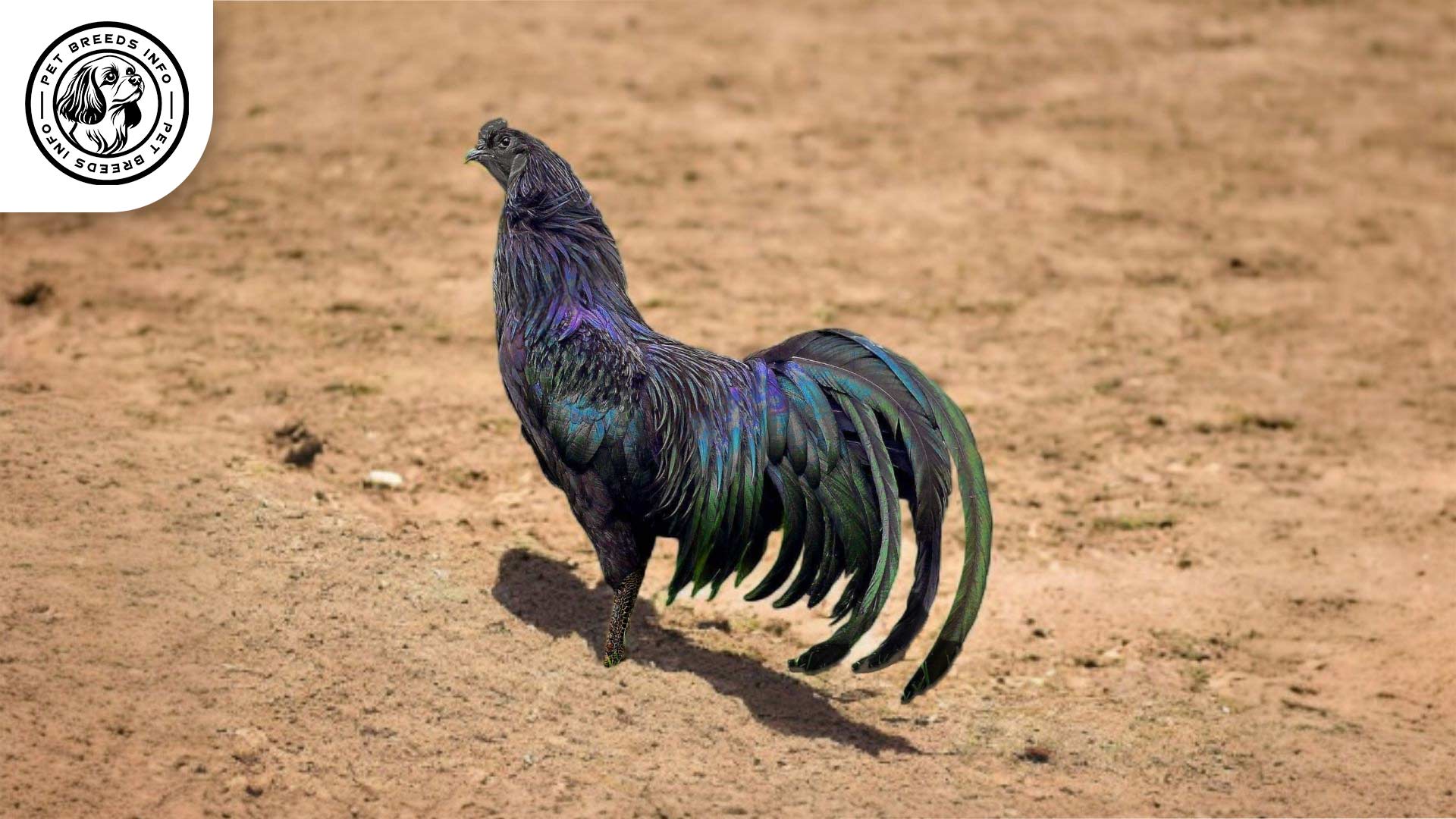
Personality and Temperament
The Sumatra Chicken is known for its independent and somewhat wild nature. It retains much of its natural instincts, making it less domesticated than other chicken breeds.
They are intelligent birds, but their independent streak means they are not easily tamed or handled frequently. Unlike some breeds that seek human companionship, Sumatra Chickens prefer to roam freely.
They have a moderate energy level and require space to move and forage. While they can coexist with humans and other poultry, roosters can sometimes be territorial, especially during breeding seasons.
Sumatra Chickens are alert, making them excellent at detecting predators and protecting themselves from harm.
Care and Maintenance Requirements
This breed thrives best in free-range environments where they can forage and exercise naturally. They require a secure but spacious coop with proper perches and nesting boxes.
Sumatra Chickens have low grooming needs compared to other ornamental breeds. Their feathers should be kept clean, but they do not require frequent bathing or trimming. Their long tails may occasionally need gentle cleaning if they accumulate dirt.
They can tolerate a variety of climates but do best in warm, dry environments. Their small combs and wattles make them resistant to frostbite in cold weather.
Read More: Ice Pigeon
Routine hygiene practices should include trimming overgrown spurs (especially in roosters), checking for parasites, and keeping their living space clean to prevent infections.
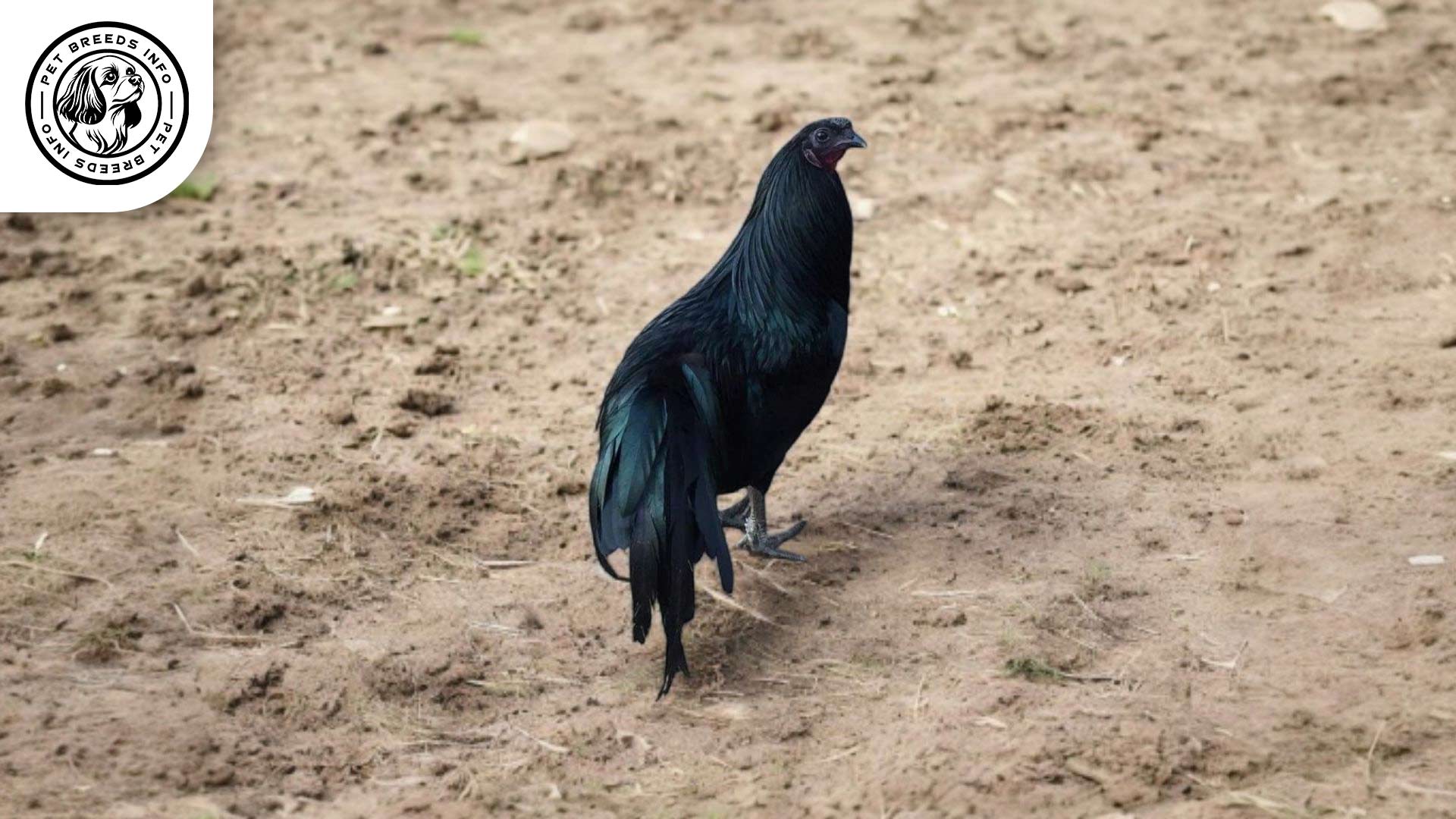
Diet and Nutrition
Sumatra Chickens should be fed a well-balanced diet consisting of high-quality poultry feed, grains, and occasional protein sources such as mealworms or insects.
They benefit from free-ranging, which allows them to consume natural forages like seeds, small insects, and plants.
Avoid feeding them processed or salty foods, chocolate, caffeine, or any toxic plants.
Portion sizes should be appropriate to their size and activity levels. Fresh water should always be available.
Health and Common Medical Issues
The Sumatra Chicken is generally a hardy breed with few genetic health issues. However, common poultry health concerns include mites, lice, and respiratory infections.
Regular deworming, parasite control, and vaccination programs should be followed to ensure their optimal health.
The breed has an average lifespan of around 5 to 10 years, depending on care and environmental conditions.
Routine veterinary check-ups can help prevent diseases and address any health concerns early.
Read More: Indian Fantail Pigeon
Training and Behavior Management
Training a Sumatra Chicken is not as straightforward as training domesticated breeds like Sussex or Rhode Island Reds. They retain much of their wild instincts and may not easily follow commands.
However, with early socialization, chicks can become somewhat accustomed to human interaction.
Providing positive reinforcement through food rewards can help encourage them to approach their owners, but they may never become fully tame.
Interaction with Other Animals and Humans
Sumatra Chickens can be kept with other chicken breeds, but roosters may show dominance, especially over other males.
They can be kept in family farms but are not the most affectionate breed towards humans.
This breed is more suited for experienced poultry keepers rather than beginner chicken keepers due to its survival instincts and independent nature.
They are generally cautious around predators and outsiders, making them great for free-ranging areas where protection is needed.
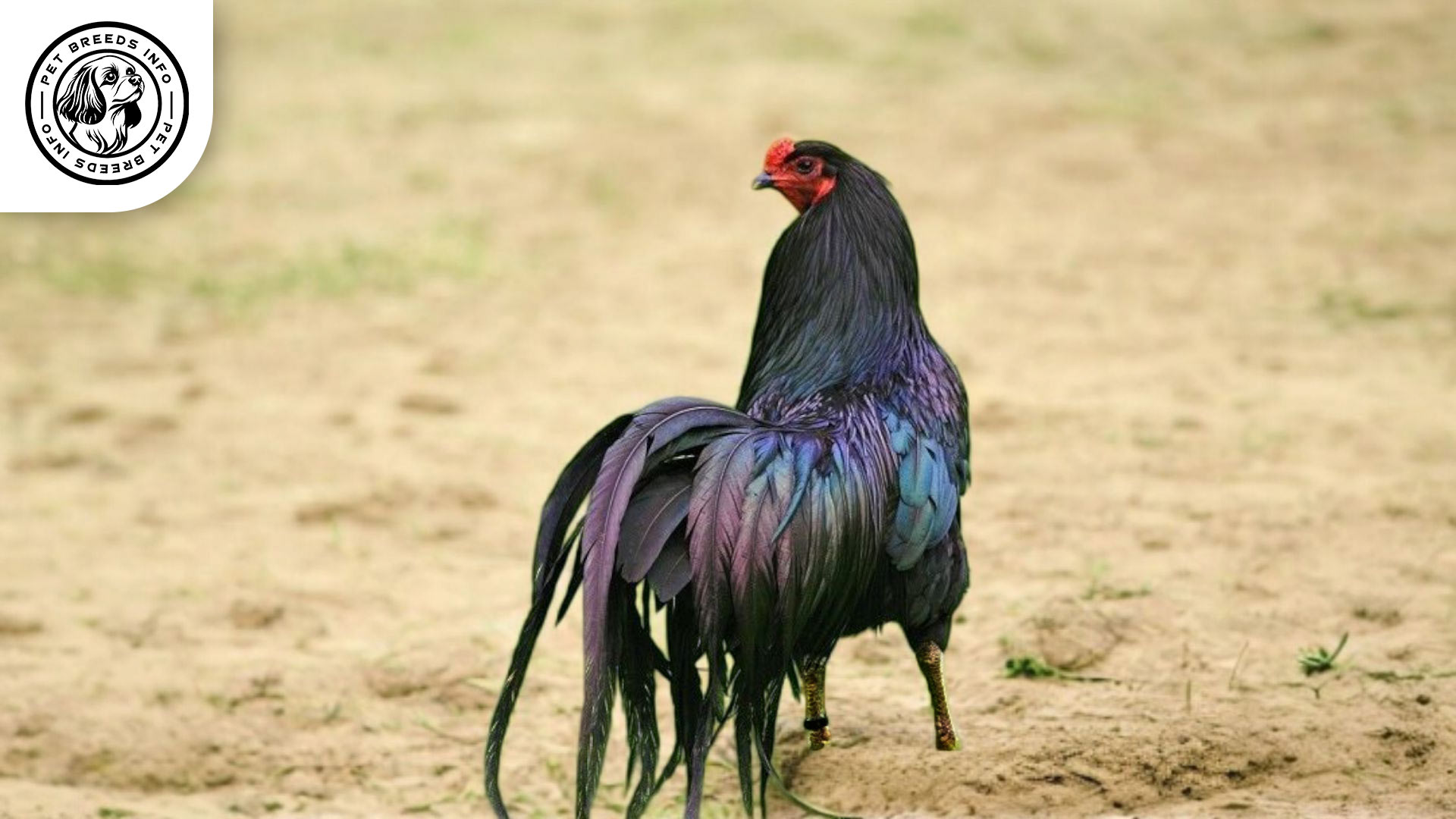
Price and Availability
The cost of Sumatra Chickens varies depending on the breeder and the bird’s quality. Prices typically range from $10 to $50 per chick, while show-quality birds may cost significantly more.
When acquiring Sumatra Chickens, it is essential to choose a reputable breeder who maintains the breed’s genetic integrity.
They are available from specialized poultry farms, hatcheries, and online poultry auctions. However, due to their rarity, availability may be limited.
Conclusion and Final Thoughts
The Sumatra Chicken is an exotic, striking breed ideal for experienced poultry keepers and enthusiasts looking for an ornamental bird.
It requires ample space, a secure environment, and minimal but consistent care. Its independent nature makes it unsuitable for those looking for affectionate or highly tameable chickens.
Read More: Lemon Dove
If you are seeking a rare and beautiful breed that thrives in a free-range setting, the Sumatra Chicken is an excellent choice.
FAQ
Where does the Sumatra Chicken come from?
It originates from the Indonesian island of Sumatra.
What makes the Sumatra Chicken unique?
Its long, flowing tail and iridescent black plumage give it an elegant, ornamental look.
Is the Sumatra Chicken friendly toward people?
Not particularly; it is independent and retains many of its wild instincts.
Can Sumatra Chickens live in cold climates?
Yes, they tolerate cold weather well due to their small combs and wattles, which resist frostbite.
How much space do they need?
They require plenty of room to roam, making them best suited for free-range environments.
